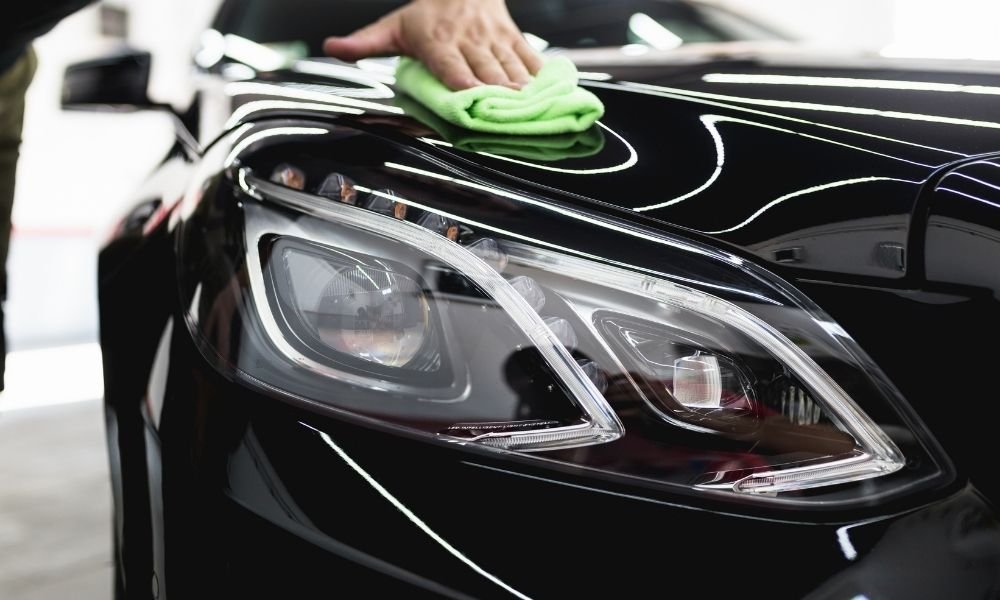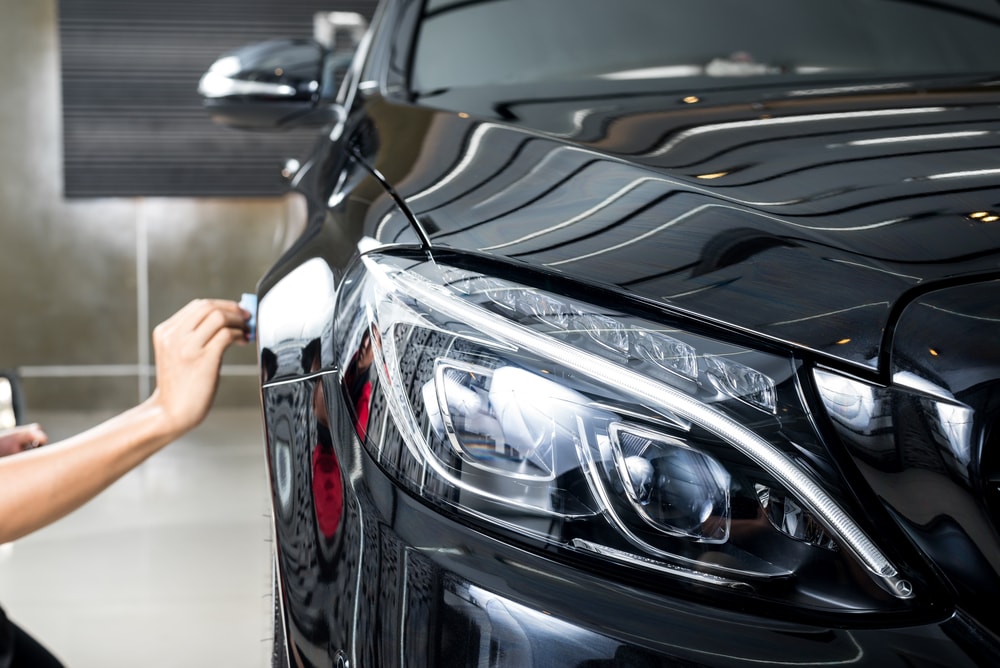Ceramic Pro: Elevate Your Auto's Finish with Expert Layer
Wiki Article
The Science Behind Ceramic Layer: Exactly How It Improves Your Automobile's Visual and Resilience

Understanding Ceramic Finishing Chemistry
The chemical make-up of ceramic coatings plays a critical role in identifying their durability and safety properties on automobile surface areas. Ceramic coatings are commonly made up of silicon dioxide (SiO2), which is a key part offering solidity and warm resistance. Other ingredients such as titanium dioxide, silicon carbide, and polysilazanes are frequently included in improve certain residential properties like UV resistance, attachment, and hydrophobicity.
Silicon dioxide, additionally understood as silica, forms a transparent and strong layer on the automobile surface when applied properly. This layer acts as a shield, securing the paint from ecological impurities, UV rays, oxidation, and chemical stains. Titanium dioxide assists in blocking unsafe UV rays that can trigger paint fading and deterioration. Silicon carbide is recognized for its abrasion resistance, making the ceramic finishing challenging and durable against physical damage. Polysilazanes are made use of to boost the finish's flexibility and adhesion to the automobile's surface, making certain resilient protection. Comprehending the chemistry behind ceramic coverings is vital for both applicators and car proprietors to value the value and benefits these coverings offer in preserving the visual allure and longevity of cars.
Improved Gloss and Mirror-like End Up
Recognizing the chemical make-up of ceramic coverings not only exposes their protective properties but additionally loses light on exactly how they add to accomplishing an improved gloss and mirror-like coating on automobile surfaces. The key to the glossy result depends on the nano-ceramic particles present in the layer. These fragments complete microscopic pores and blemishes externally, developing a smooth and degree finish. As light hits the coated surface area, it mirrors evenly, offering the look of a deep, glossy sparkle. Additionally, the chemical structure of ceramic coverings enables them to form a solid bond with the vehicle's paintwork, avoiding oxidation and keeping the clearness of the finish with time. This bond also resists environmental pollutants, such as dirt and grime, that can plain the shine of the car. The combination of loading properties, light reflection, and durable defense makes ceramic coatings a preferred selection for those looking for a dynamic and mirror-like coating for their vehicles.
Effect on Paint Security and Longevity
Ceramic coatings for vehicles dramatically improve the longevity and defense of the paintwork. By creating a chemically resistant layer on top of the automobile's clear coat, ceramic coverings act as an obstacle versus various ecological pollutants that can damage the paint over time.In terms of long life, ceramic layers offer a resilient remedy compared to conventional waxes or sealers. In general, the safety residential or commercial properties of ceramic layers contribute significantly to preserving the car's paintwork and enhancing its visual charm over an extensive duration.
Resistance to Contaminants and Rough Elements
With the safety shield supplied by ceramic finishings versus different environmental pollutants and aspects, find more information automobiles are able to preserve their beautiful look regardless of exposure to harsh conditions. Ceramic coverings produce a solid obstacle that wards off water, dust, dirt, and other usual toxins, avoiding them from bonding to the car's surface. This hydrophobic nature not only makes cleaning simpler however also decreases the danger of water areas and etching created by acidic contaminants. Furthermore, the chemical resistance of ceramic coverings aids safeguard the paint from bird droppings, insect splatter, tree sap, and various other destructive compounds that can damage the surface with time.Moreover, ceramic coverings provide UV defense, shielding the automobile's paint from the sun's hazardous rays that can create fading and oxidation. This resistance to UV damage assists preserve the color strength and sparkle of the paint for longer durations. By creating a resilient and lasting barrier, ceramic finishes guarantee that the vehicle's exterior remains secured against a vast array of impurities and extreme components, protecting its visual appeal and resilience.
Application Methods and Maintenance Tips
For optimal results when using ceramic layers to cars, utilizing proper techniques and sticking to suggested maintenance practices are vital. The application process of ceramic finishing needs interest to detail and precision. Before applying the ceramic finishing, it is important to completely clean and decontaminate the automobile's surface area to make sure correct bond. This involves washing, claying, and potentially polishing the paint to produce a smooth canvas for the ceramic finishing to bond successfully.When applying the ceramic finish, it is suggested to work in small sections to guarantee also coverage and to stop the item from drying out as well promptly. Utilizing applicator pads or microfiber cloths, use the finish in a crisscross or up-and-down activity, relying on the item's instructions. After the finish is applied, enable it to treat for the defined time prior to rubbing off any type of deposit.
In terms of upkeep, normal washing with pH-neutral soaps and staying clear of rough chemicals or rough tools will assist maintain the ceramic coating's stability. Regular evaluations for any type of damage or use on the coating can also help keep its safety residential properties over time.

Final Thought
Finally, ceramic finish enhances a car's visual appeal and longevity via its chemical check this site out structure, providing a shiny surface and securing the paint from ecological contaminants. Its resistance to severe components and ease of upkeep make it a popular option for automobile proprietors wanting to preserve the appearance of their automobiles. In general, ceramic finishing is a clinically backed service for preserving the look and longevity of your automobile.Comprehending the chemistry behind ceramic coverings is crucial for both applicators and car proprietors to appreciate the worth and advantages these finishings offer in keeping the visual charm and long life of automobiles. (ceramic pro)
Understanding the chemical structure of ceramic finishings not just reveals their safety residential or commercial properties yet additionally sheds light on exactly how they add to achieving an enhanced gloss and mirror-like surface on car surfaces. like this By developing a chemically resistant layer on top of the car's clear coat, ceramic finishes act as a barrier against various environmental contaminants that can damage the paint over time. Overall, the safety properties of ceramic layers contribute considerably to maintaining the lorry's paintwork and enhancing its visual allure over a prolonged period.
In final thought, ceramic covering enhances a vehicle's visual appeal and longevity with its chemical composition, offering a glossy coating and shielding the paint from environmental impurities.
Report this wiki page